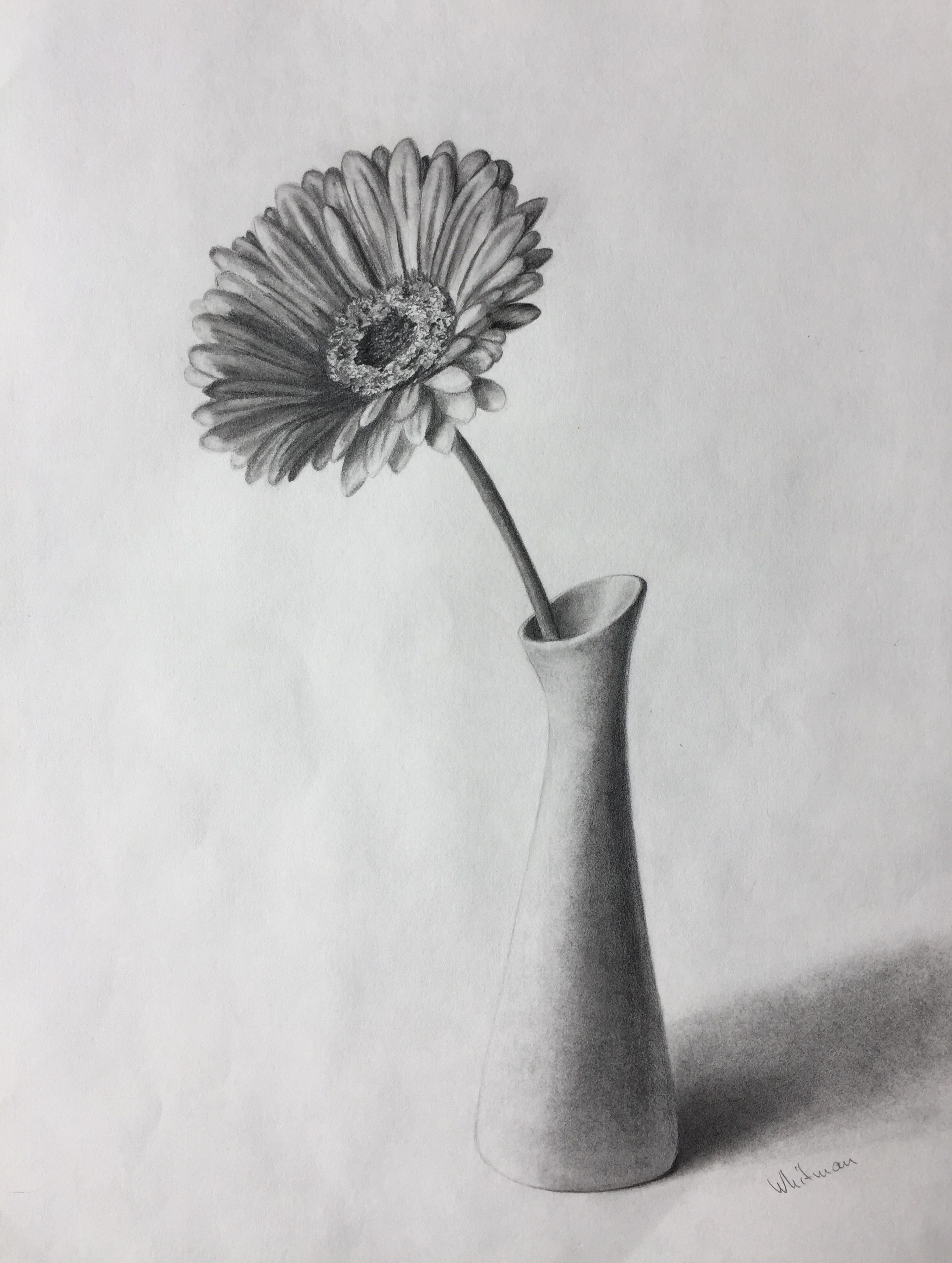
Creating a still life drawing of flowers in a vase using pencil sketching techniques is a delightful and rewarding artistic endeavor. This article will guide you through the process of creating a stunning representation of natural beauty through the art of pencil sketching. Whether you are a beginner or an experienced artist looking to refine your skills, this article will provide helpful tips and techniques to enhance your still life drawings.
Choosing the Right Subject

Before you begin your still life drawing, it is essential to choose the right subject. Flowers in a vase make an excellent choice for a still life drawing as they offer a wide range of colors, shapes, and textures to explore. Select flowers that inspire you and arrange them in a vase that complements their beauty. Consider the lighting conditions and the angle from which you will be drawing to capture the essence of the scene.
Gathering the Materials

Before diving into your still life drawing, gather all the necessary materials. You will need a set of high-quality pencils, ranging from light to dark shades, to achieve depth and dimension in your sketch. Additionally, have a sketchbook or drawing paper, an eraser, and a sharpener handy. Prepare your workspace with good lighting and ensure you have ample time to focus on your artwork.
Understanding Composition

Composition plays a vital role in creating a visually appealing still life drawing. Before starting your sketch, take a moment to consider the arrangement of flowers in the vase and other elements surrounding them. Explore different compositions by moving the vase and adjusting the placement of the flowers until you find a visually pleasing setup. Pay attention to the balance, focal point, and negative spaces within your composition.
Starting with Basic Shapes

To begin your still life drawing, it is helpful to start with basic shapes. Observe the flowers and vase carefully, breaking them down into simple geometric forms such as circles, ovals, and cylinders. This step will allow you to establish the overall structure and proportions of your drawing accurately. Use light pencil strokes to outline these basic shapes, ensuring they are in the correct positions before moving on to adding details.
Adding Details and Textures

Once you have established the basic shapes, it's time to add details and textures to your still life drawing. Observe the flowers closely, noticing the intricate details of each petal, leaf, and stem. Use various pencil techniques such as hatching, cross-hatching, and shading to create depth and texture in your sketch. Be patient and take your time to capture the delicate beauty of each element within the vase.
Working with Values and Shadows

Values and shadows are essential components of a realistic still life drawing. Study the lighting conditions and identify areas of light and shadow within your composition. Use different shades of pencils to create smooth transitions between light and dark areas. Pay attention to the direction of light and the cast shadows to add depth and dimension to your drawing. Gradually build up the values and shadows, refining them as you progress.
Refining and Smoothing Out

As you continue working on your still life drawing, refine and smooth out the details. Use an eraser to correct any mistakes or stray lines. Pay attention to the overall balance and harmony of your sketch, ensuring that each element looks cohesive. Take breaks and step back to evaluate your progress from a distance. This perspective will help you identify areas that need refinement and make necessary adjustments.
Adding Final Touches

When you are satisfied with the overall look of your still life drawing, add the final touches to enhance its visual impact. Accentuate the highlights and add small details that bring life to your artwork. Consider using a kneaded eraser to create subtle highlights or a blending stump to soften edges and create smooth transitions. Take your time in this stage to ensure that every detail contributes to the overall beauty of your drawing.
Preserving and Displaying Your Artwork

Once you have completed your still life drawing, it's important to preserve and display it properly. Use a fixative spray to protect your artwork from smudging and ensure its longevity. Consider framing your drawing to protect it from dust and damage. Choose a frame that complements the style and aesthetic of your artwork, allowing it to shine as a centerpiece in any room.
Conclusion
Creating a still life drawing of flowers in a vase through pencil sketching is a gratifying artistic journey. By carefully observing the subject, understanding composition, and mastering pencil techniques, you can bring the beauty of natural elements to life on paper. Remember to enjoy the process, as each stroke of your pencil adds depth and character to your artwork. With practice and patience, you will continue to refine your skills, creating breathtaking still life drawings that captivate viewers and evoke emotions.